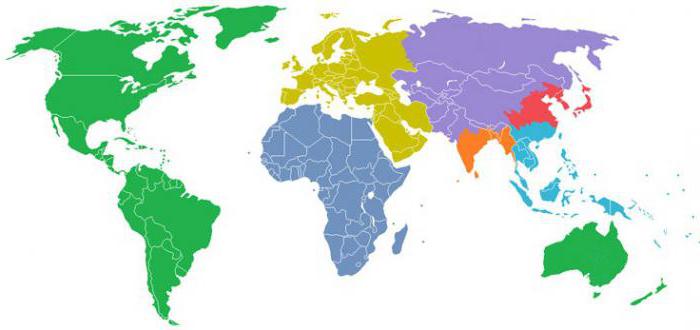The population density of countries around the world varies significantly. In some states, only 3-4 people live on one square kilometer. In others, the same unit of area has several thousand inhabitants. The difference is really impressive ... What is the population density of the largest countries in the world? And which states are the absolute leaders in this indicator?
The history of the settlement of the planet
The population density of countries around the world today varies widely across regions and continents. To better understand the nature of this pattern, you need to quickly review the history of the population of our planet.

At the earliest stages of the development of human society, plain expanses were located on the shores of the seas, large rivers or lakes. Obviously, it was much easier to farm here, it was more convenient to build houses and lay roads. But the mountains were mastered tens of times slower. Traditionally, Southeast Asia has been characterized by a high population density since ancient times. The reason for this is the formation of powerful rice-growing centers here.
Later, with the development of technological progress, people began to flock to those areas of the Earth where factories and factories were actively being built, whole industrial cities and villages arose. Such areas were Central and Western Europe, the Atlantic coast in the USA and others.
Since about the middle of the twentieth century, the main centers of attraction on Earth for the population have become large cities - megacities. This phenomenon has received its name in science - urbanization.

Density of the population of the countries of the world and continents: regional differences
The population of our planet is distributed extremely unevenly. To get started, here are some interesting numbers. So, about 75% of the world's population lives on only 7 percent of its area. Almost 80% of the inhabitants live in the Eastern Hemisphere. The average world population density is approximately 30 people per square kilometer (including Greenland and Antarctica).
To visualize how much the population density of different continents of the planet varies, you need to look at the next map. On it, the whole world is divided in color into 7 zones, in each of which one billion people live. By comparing the scale of these colored pieces, we can assess the degree of uneven distribution of the earth's population.

So, the three continents of the Earth are very poorly populated: these are Australia, North and South America. But in Europe, Asia and Africa, 6 of the 7 billion inhabitants of our planet live.
All states in terms of population density are usually divided into four types:
- countries with low density (0-2 people / km2);
- countries with an average density (2-40 people / km2);
- countries with a high density (40-200 people / km2);
- countries with maximum density (over 200 people / km2).
Interestingly, striking contrasts in population density can be observed even within the same state. Vivid examples of such countries are Australia, where only the east coast is heavily populated; Egypt (Nile Valley), Indonesia (Java Island) and others.
If we talk about the regions of the planet, the most populated are the following:
- East Asia.
- South Asia
- Southeast Asia.
- Western Europe.
- Northeastern United States.
The main factors affecting global settlement
This uneven distribution of the world population is due to a number of specific reasons (factors). Among them:
- natural and climatic factor (the relief of the territory, climatic conditions, boggy lands, the presence of a water source, etc., affect the resettlement of people);
- historical factor (according to scientists, the formation of a rational person is associated with three centers on the planet, which affected the high population density in these areas of the Earth);
- demographic factor (in some countries and regions, birth rates are several times higher than in others, which also explains regional differences in population density);
- economic factor (in the last two or three centuries, the influence of this factor is especially noticeable: people are attracted to industrialized areas with a sufficient number of cities, enterprises and infrastructure).

Countries with the highest population density: TOP-10
What modern countries on our planet can be called champions in population density? As a rule, these are very small states. The countries of the world with the highest population density are presented in a table indicating the density indicator.
| A country | Average population density (people / km2) |
| Monaco | 18 680 |
| Singapore | 7605 |
| Vatican | 1915 |
| Bahrain | 1720 |
| Malta | 1430 |
| Maldives | 1360 |
| Bangladesh | 1155 |
| Barbados | 665 |
| Mauritius | 635 |
| San marino | 515 |
Russia is 181st in this list, the USA is 142nd, and Ukraine is 99th.
In addition to countries, there are cities in the world where population density reaches tremendous values. The ten most populated cities on the planet include Shanghai, Karachi, Istanbul, Tokyo, Mumbai, Manila, Buenos Aires, Delhi, Dhaka and Moscow.
The most “spacious” countries of the world: TOP-10
Nevertheless, in the world there are a lot of countries with a low population density. On the territory of such states, you can travel (or walk) for many kilometers without meeting a single living soul.

Below are a dozen of world countries with minimal population density indicators.
| A country | Average population density (people / km2) |
| Mongolia | 2,0 |
| Namibia | 2,6 |
| Australia | 2,8 |
| Suriname | 3,0 |
| Iceland | 3,1 |
| Mauritania | 3,1 |
| Libya | 3,2 |
| Botswana | 3,4 |
| Canada | 3,5 |
| Guyana | 3,5 |
Finally…
The population density of the countries of the world varies in different regions of the planet. So, the average density indicator is 30 people per one square kilometer of area. However, in some states it reaches values of 1000-2000 inhabitants per 1 km2. In large cities of the planet, these indicators are an order of magnitude higher.
